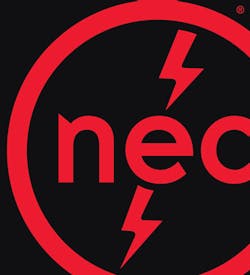Article 646 of the National Electrical Code (NEC) provides the requirements for everything in the modular data center enclosure, including the working space. Article 646 consists of four Parts, and Part IV is all about the workspace within a modular data center (and it takes up almost half a page).
The first concern is egress from the enclosure. The goal is to prevent trapping a person in there should a fire or another incident occur. That’s why, for example, the egress door(s) must open in the direction of egress and be equipped with panic bars, pressure plates, or other devices that are normally latched but open under simple pressure [Sec. 646.19].
Part IV also reflects concerns about working space around the IT equipment and batteries. Use Sec. 110.26 to determine that minimum working space.
The final concern is that workspace is sufficient to facilitate routine servicing and maintenance without exposing the worker to risk of electric shock or personal injury [Sec. 646.22]. This often requires exceeding the 110.26 minimums. Is there enough space to safely perform the maintenance tasks without, for example, risking back injury?
About the Author

Mark Lamendola
Mark is an expert in maintenance management, having racked up an impressive track record during his time working in the field. He also has extensive knowledge of, and practical expertise with, the National Electrical Code (NEC). Through his consulting business, he provides articles and training materials on electrical topics, specializing in making difficult subjects easy to understand and focusing on the practical aspects of electrical work.
Prior to starting his own business, Mark served as the Technical Editor on EC&M for six years, worked three years in nuclear maintenance, six years as a contract project engineer/project manager, three years as a systems engineer, and three years in plant maintenance management.
Mark earned an AAS degree from Rock Valley College, a BSEET from Columbia Pacific University, and an MBA from Lake Erie College. He’s also completed several related certifications over the years and even was formerly licensed as a Master Electrician. He is a Senior Member of the IEEE and past Chairman of the Kansas City Chapters of both the IEEE and the IEEE Computer Society. Mark also served as the program director for, a board member of, and webmaster of, the Midwest Chapter of the 7x24 Exchange. He has also held memberships with the following organizations: NETA, NFPA, International Association of Webmasters, and Institute of Certified Professional Managers.
